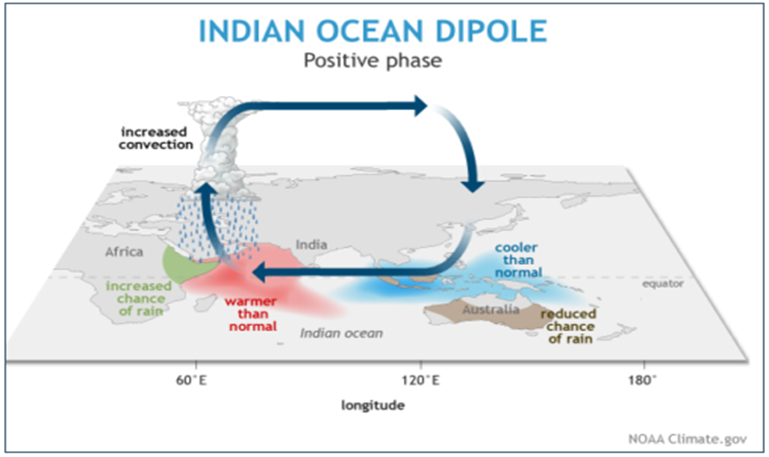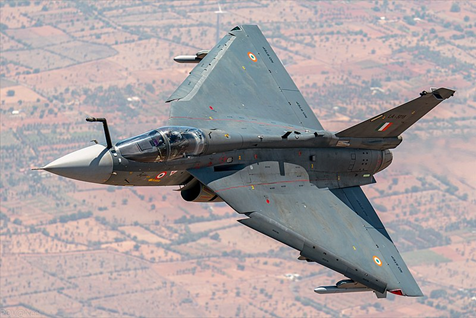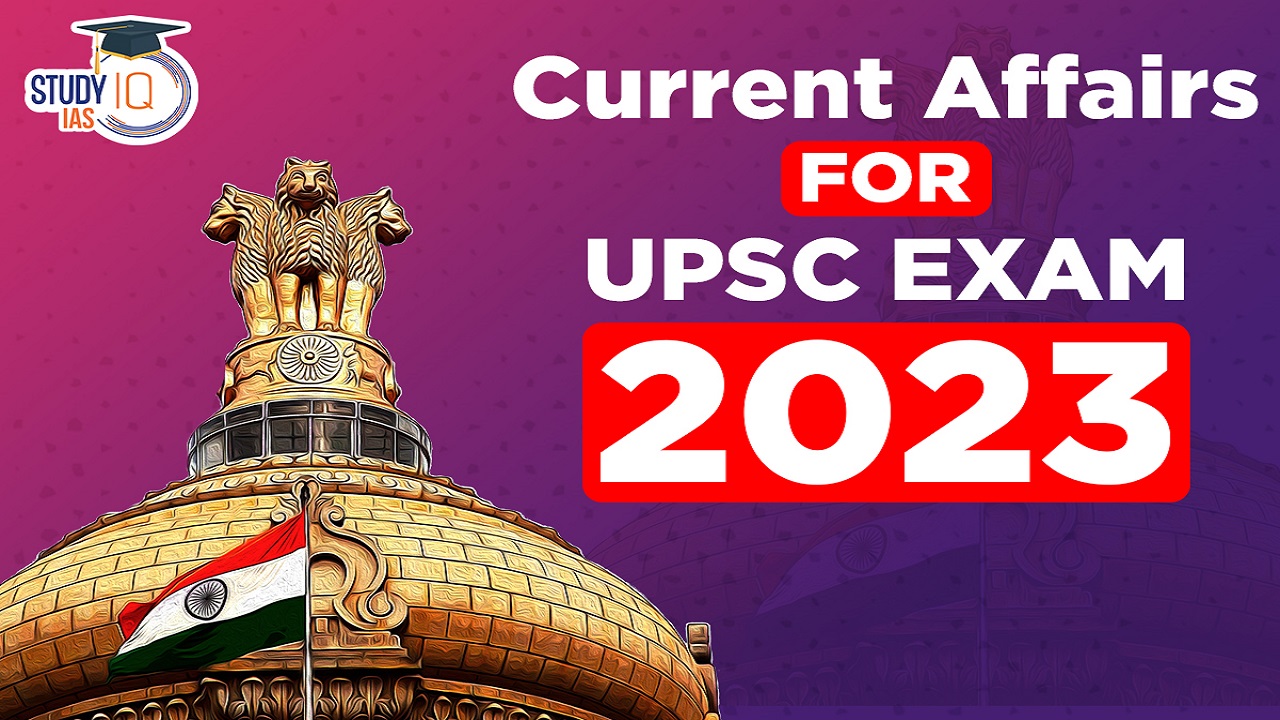Current Affairs 4th October 2023 for UPSC Prelims Exam
Indian Ocean Dipole
Context: The unexpected surge in rainfall during September can be attributed to the Indian Ocean Dipole, which counteracted the initially subdued forecast due to the influence of El Niño.
What is the Indian Ocean Dipole (IOD)?
- It is an ocean-atmosphere phenomenon that occurs in the Indian Ocean.
- Characterized by the fluctuation of sea surface temperatures (SSTs) and atmospheric pressure patterns between the eastern (Bay of Bengal) and the western Indian Ocean (Arabian Sea).
- The IOD can significantly impact weather patterns and climate in parts of Africa, Southeast Asia, and Australia.
- IOD is also considered as the Indian Ocean basin branch of the Walker Cell.
- The longitudinal (east-west) atmospheric circulation across the equatorial Pacific is known as the Walker cell or Walker circulation.
Mechanism of IOD
- The IOD has three phases: Neutral, Positive and Negative IOD.
Neutral Phase
- It’s the condition when there is no significant difference in SSTs between the western and eastern parts of the Indian Ocean.
- In a normal year, driven by the Walker Cell, the warmer waters in the western Pacific near Indonesia cross over into the Indian Ocean and make that part of the Indian Ocean slightly warmer. That causes the air to rise above this area and falls over the western half of the Indian Ocean basin.

Negative IOD
- It is driven by cooler than normal SSTs off the coast of Africa and warmer than normal SSTs to the west of Indonesia.
- This configuration of SSTs strengthens the Walker cell.
- Impact: The strong Walker cell leads to stronger convection over Indonesia, and often drought conditions for the Horn of Africa.

Positive IOD
- It is driven by warmer than normal SSTs off the coast of Africa and cooler than normal SSTs to the west of Indonesia.
- This configuration of SSTs reverses the normal circulation, weakening the Walker cell.
- Impacts:
- Suppressed convection over Indonesia, and leads to predominately dry weather and potential for drought.
- Over the Horn of Africa, convection is enhanced and rainfall is much more abundant than usual.

Impact of IOD on South West Monsoon
- Increased rainfall due to positive IOD: Studies have shown that a positive IOD year sees more than normal rainfall over central India. Also, it was demonstrated that a positive IOD often negated the effect of El Niño, resulting in increased Monsoon rains.
- Droughts Due to negative IOD: A negative IOD, on the other hand, complements El Niño leading to severe droughts.
- Cyclones: Positive IOD results in more cyclones than usual in Arabian Sea. Negative IOD results in stronger than usual cyclogenesis (Formation of Tropical Cyclones) in the Bay of Bengal.
Manufacturing Purchasing Managers’ Index (PMI)
Context: As per the Manufacturing Purchasing Managers’ Index (PMI), India’s manufacturing sector experienced a slight slowdown in September 2023, which declined from 58.6 in August to 57.5.
More on News
- The mild slowdown in manufacturing sector has occurred due to softer increase in new orders, affecting production growth.
- However, the manufacturing industry in India still remains robust, with substantial growth in new orders and production in September 2023 due to strong demand, both domestically and internationally.
- International demand has been expanding for the 18th consecutive month, reflecting a positive trend.
Purchasing Managers’ Index (PMI)
- Definition: PMI or a Purchasing Managers’ Index (PMI) is an indicator of business activity — both in the manufacturing and services sectors.
- PMI was started for the first time by US-based Institute for Supply Management (ISM) in 1948.
- Types: There are two types of PMI — Manufacturing PMI and Services PMI.
- A combined index is also made using both manufacturing PMI and services PMI.
- Measure: PMI is derived after monthly surveys of different companies.
- Importance:
- PMI helps in determining whether the market conditions, as seen by purchasing managers, is expanding, contracting or staying the same.
- It is used to provide information regarding the current and future business conditions.
- PMI gives an idea about the direction the economy is taking and helps economists in predicting the manufacturing activity in the country.
- The manufacturers and suppliers use the index to decide on their production needs based on new orders in the coming months.
- The index also helps investors who are looking to invest in the stock markets as it helps in determining the economic health of the country.
- Published by: S&P Global
- Manufacturing PMI:
- For manufacturing PMI, the questionnaire is sent to manufacturing companies.
- The questions are factual in nature.
- The questions related to 5 key variables with their weights are:
- new orders (30%),
- output (25%),
- employment (20%),
- suppliers’ delivery times (15%),
- stock of items purchased (10%).
- Reading of PMI:
- A PMI number greater than 50 indicates expansion in business activity.
- A number less than 50 shows contraction.
- The rate of expansion is also judged by the difference from the mid-point (50) and also by previous month’s data.
- If the figure is higher than the previous month’s then the economy is expanding at a faster rate.
- If it is lower than the previous month then it is growing at a lower rate.
International Criminal Court
Context: Armenia’s Parliament voted to join the International Criminal Court.
About the International Criminal Court (ICC)
- It was established in 2002 under the Rome Statute of 1998.
- Objective: to investigate war crimes, genocide and crimes against humanity.
- Background: It was a successor to ad hoc international tribunals set up in the 1990s to address the atrocities committed in the former Yugoslavia and Rwanda.
- ICC is different from the International Court of Justice (ICJ), an organ of the United Nations that hears disputes between states. (see the table given below).
- Headquarters: Hague, Netherlands
- Members: Currently 123 member states. The most recent to join are Antigua and Barbuda (in 2022).
- Countries that want to join the ICC have to ratify the Rome Statute of 1998.
- India and ICC: India did not sign the Rome Statute, and thus, is not a member of ICC.
- Jurisdiction of ICC:
- The Rome Statute, grants the ICC jurisdiction over four main crimes:
- The crime of Genocide,
- Crimes against Humanity,
- War crimes, and
- Crime of Aggression.
- Additionally, ICC has jurisdiction when the United Nations Security Council refers a situation to the Court.
- The Court may exercise jurisdiction in a situation where genocide, crimes against humanity or war crimes were committed on or after 1 July 2002.
- ICC has jurisdiction if crimes were committed by a State Party national, or in the territory of a State Party, or in a State that has accepted the jurisdiction of the Court.
- The ICC is intended to complement, not to replace, national criminal systems; it prosecutes cases only when a country’s own legal machinery fails to act.
- The Rome Statute, grants the ICC jurisdiction over four main crimes:
How is ICC Different from ICJ?
| Parameter | ICC (International Criminal Court) | ICJ (International Court of Justice) |
| Year court established | 2002 | 1946 |
| Location | Hague, Netherlands | Hague, Netherlands |
| UN Relation | Independent- may receive case referrals from UN Security Council | Official court of the UN, known as the World Court |
| Case types | Criminal prosecution of individuals | Contentious between parties, and advisory opinions |
| Subject matter | Genocide, crimes against humanity, war crimes, crimes of aggression | Maritime disputes, sovereignty, natural resources, trade, treaty violations and treaty interpretations, human rights, etc. |
| Funding | Contributions from parties to the Rome Statute, voluntary contributions from the UN, governments, corporations, organizations, etc. | UN |
LCA Tejas Mk1A
Context: The Indian Air Force (IAF) is planning to procure several Light Combat Aircraft (LCA)- Tejas Mk1A fighter jets in the next few years.
About the Light Combat Aircraft (LCA) Tejas
- The LCA Tejas is a single-engine, delta wing, and light multirole fighter aircraft.
- It is indigenously designed and developed by the Aeronautical Development Agency (ADA) in collaboration with Hindustan Aeronautics Limited (HAL).
- The LCA programme was started by the Government of India in 1984. It was in 2003 that the LCA programme was named ‘Tejas’ (meaning radiance in Sanskrit)
- The LCA Tejas was intended to replace India’s aging fleet of MiG-21 fighter jets.
- Key features of the Light Combat Aircraft (LCA) Tejas:
- delta wing design to give excellent maneuverability and high-speed performance.
- fly-by-wire flight control system, which provides the pilot with precise control over the aircraft.
- active electronically scanned array (AESA) radar, which gives it a significant advantage in air-to-air combat.
- armed with Beyond-visual-range (BVR) missiles to engage enemy aircraft at long ranges.
- multirole capabilities, including air superiority, ground attack, and reconnaissance etc.
- relatively low-cost to operate and maintain.

- Three variants of the LCA Tejas:
-
- Tejas Mk.1: It is the initial production variant of the Tejas.
- It is currently in service with the Indian Air Force.
- Tejas Mk.1A: It is an upgraded version of the Tejas Mk.1.
- It is expected to be inducted into the Indian Air Force in the near future.
- Key differences between Tejas Mk.1 & Tejas Mk.1A:
- Tejas Mk.1: It is the initial production variant of the Tejas.
| Feature | Tejas Mk.1 | Tejas Mk.1A |
| Radar | Mechanically scanned radar | Active electronically scanned array (AESA) radar |
| Beyond-visual-range (BVR) missile system | No | Yes |
| Network warfare system | No | Yes |
- Tejas Mk.2: It is a more advanced variant of the Tejas.
- It is currently under development.
- The LCA Mk2 will be pitched as a replacement for the Jaguars, MiG-29s, and Mirage 2000s.
- The mission endurance for fighting a war was 57 minutes for LCA Tejas Mk1, but it is 120 minutes for LCA Tejas Mk2.
- Tejas Trainer: 2-seater operational conversion trainer for training air force pilots.
- LCA Navy: Twin- and single-seat carrier-capable for the Indian Navy.
Swacch Bharat Mission-Gramin (SBM-G)
Context: The World Bank recently released a research paper on the implementation of Swacch Bharat Mission-Gramin in Rural India.
Key Observations:
- The first phase of 2015-2019 was marked by large improvements, followed by some stagnation and decline over the last two years.
- Sustained decline in regular use of toilets since 2018: Uttar Pradesh, Gujarat, Chhattisgarh, Telangana, Karnataka, and Himachal Pradesh.
- Steady performers in terms of continued toilet usage: Odisha, Punjab, Kerala, Bihar, Uttarakhand, Haryana, and Assam.
- Most low-income States were among the best performers in terms of overall increase in regular use of toilets.
- At the national level, regular use of any toilet (improved or unimproved) increased from 46% to 75% on average in rural areas during 2015-16 and 2019-21.
- However, from 2018-19 onwards, the regular use of toilets declined for all groups with largest decline for the SCs and the STs.
Swacch Bharat Mission-Gramin (SBM-G)
- Definition: Swachh Bharat Mission is a Centrally Sponsored Scheme that was launched in 2014.
- Aim: Achieve universal sanitation coverage in rural areas and eliminate open defecation in rural areas during the period 2014 to 2019.
- Nodal Ministry: Ministry of Jal Shakti, GoI.
- Implementation: Nation-wide campaign/Janandolan.
- Success:
- Sanitation coverage increased in just 5-years from 39% in 2014 to 100% by 2019.
- 10.28 Crore toilets were built in India and all the districts declared themselves Open Defecation Free (ODF).
- SBM(G)] Phase-II: Being implemented during the period from 2020-21 to 2024-25 with the objective of transforming all the villages from ODF to ODF Plus.
- Major Components and Status of Phase-II of SBM (G):
- Sustaining Open Defecation Free Status (ODF-S):
- An ODF Plus village is one which has sustained its Open Defecation Free (ODF) status along with implementing either solid or liquid waste management systems.
- 75% villages in India have achieved ODF Plus status.
- States/UTs with 100% ODF ODF Plus villages are: Andaman & Nicobar Islands, D&N Haveli, Uttar Pradesh, Goa, Gujarat, Himachal Pradesh, Jammu & Kashmir, Karnataka, Kerala, Ladakh, Puducherry, Sikkim, Tamil Nadu, Telangana, and Tripura.
- Solid (Bio-degradable) Waste Management:
- People are being encouraged to segregate their dry and wet (organic) waste at source for composting at community level.
- 3,47,094 Community compost pits have been constructed.
- Plastic Waste Management (PWM):
- 2,380 Plastic Waste Management Units and 1,78,556 waste collection & segregation sheds have been set-up.
- The plastic is cleaned, shredded, bailed and transported for use in road construction also as a fuel in cement factories etc.
- More than 1.59 lakh Gram Panchayats have passed resolution for ban on Single Use Plastic (SUP).
- Liquid Waste Management (LWM):
- Through Sujlam campaign, 22 Lakh Soak Pits (Community & Household) are constructed to manage Grey Water (wastewater generated from everyday household chores) in villages.
- Faecal Sludge Management (FSM):
- FSM (wastewater generated from toilets) is managed at household level through retrofitting of toilets into twin pit toilets and managed at village level by treatment at Sewage Treatment Plants (STPs).
- GOBARdhan:
- Galvanising Organic Bio-Agro Resources-dhan, is an initiative to support biodegradable waste recovery, conversion
- A ‘waste to wealth’ initiative: Waste generated in villages is used to generate bio-gas/CBG as well as bio-slurry/bio-fertilizer.
- Information Education and Communication/Behavior Change: The SBM-G program has been instrumental in improving the health and well-being of millions of people across the country.
- Sustaining Open Defecation Free Status (ODF-S):
Earthquake
Context: Nepal experienced a series of four earthquakes occurring rapidly, with the most powerful registering a magnitude of 6.2. These tremors were felt in various regions of northern India, including the Delhi-NCR area.
Earthquake
- An earthquake is a motion of the ground surface, ranging from a faint tremor to a wild motion capable of shaking building apart.
- The point within the earth’s crust where an earthquake originates is called the focus.
- The point vertically above the focus on the earth’s surface is known as ‘epicentre’.

Causes and Types
- Tectonic Earthquake:
- Earth’s outer skin is composed of called tectonic plates.
- Earthquakes occur along the boundaries between tectonic plates or at the site of cracks within the plates, which are called faults.
- The tectonic plates that make up the earth’s crust are moving constantly.
- As the edges of these plates slide against each other in fault zones, friction can slow them down, leading to the buildup of pressure over long periods of time.
- When the force of movement finally overcomes the friction, sections of the crust suddenly break or become displaced, releasing the pent-up pressure in the form of seismic waves. This is a naturally occurring earthquake called as tectonic earthquake.
- Eg: Majority of these earthquakes occur at the circum-Pacific seismic belt.

- Volcanic Earthquakes: These are caused by violent volcanic eruptions that put the solid rocks under great stress that causes vibrations in the earth’s crust. However, these earthquakes, are limited to the areas of volcanic activity.
-
- Eg: Mauna Loa volcano of Hawaii Island in 1868.
- Human Induced Earthquakes: Induced quakes are caused by human activity, like tunnel construction, filling reservoirs and implementing geothermal or fracking projects.
- Explosion Earthquakes: These are caused by nuclear explosions.
- Collapse Earthquakes: These kinds of earthquakes are smaller and occur near underground mines. Collapse earthquakes are instigated by the pressure generated within the rocks.
Seismic Waves
- When an earthquake occurs, it makes seismic waves, which cause the shaking we feel.
- Primary waves: These waves move longitudinally i.e.the propagation and vibration are in a same direction similar to the sound waves.
- They are the fastest of all the earthquake waves.
- These waves can travel through solids, liquids, and gases.

- Secondary waves: As they move along the surface, the direction of the vibration is perpendicular to the propagation.
- Travels only through the solid state of matter.
- Surface waves: Surface waves travel more slowly through Earth material at the planet’s surface and have lower frequency than P and S waves.
- Travels only through the solid state of matter.
Effects of Earthquake
- Ground shaking
- Soil liquefaction
- Landslides
- Fissures
- Avalanches
- Fires and tsunamis.
Distribution of Earthquakes
- Circum-Pacific Belt (Ring of Fire):
- Comprises the western coast of North and South America; Aleutian Islands and island groups along the eastern coasts of Asia such as Japan and Philippines.
- About 81% of our planet’s largest earthquakes occur here.
- Mid-world mountain Belt:
- Extends from Alps with their extension into Mediterranean the Caucasus and the Himalayan region and continues into Indonesia.
- About 21% of total earthquakes of the world originate in this belt.
- Mid-Atlantic Ridge:
- The mid-Atlantic Ridge marks where two tectonic plates are spreading apart (a divergent plate boundary).
- Most of the mid-Atlantic Ridge is deep underwater and far from human development.
Measuring Earthquakes
- The instrument used for recording the earthquakes is known as seismograph.
- The Richter magnitude scale is the most common standard of measurement for earthquakes. It is used to rate the magnitude of an earthquake, that is the amount of energy released during an earthquake. It is expressed in absolute numbers 0-10.
- The Mercalli scale is used to measure the intensity of an Earthquake. The range of intensity scale is from 1-12.


 Bharat Bandh 9 July 2025: Over 25 Crore ...
Bharat Bandh 9 July 2025: Over 25 Crore ...
 UPPSC Mains Question Paper 2025: Downloa...
UPPSC Mains Question Paper 2025: Downloa...
 Sukhoi Su-57: Will India Choose Russia�...
Sukhoi Su-57: Will India Choose Russia�...





















